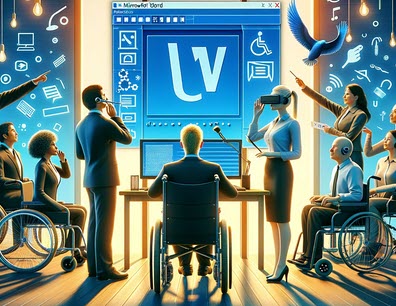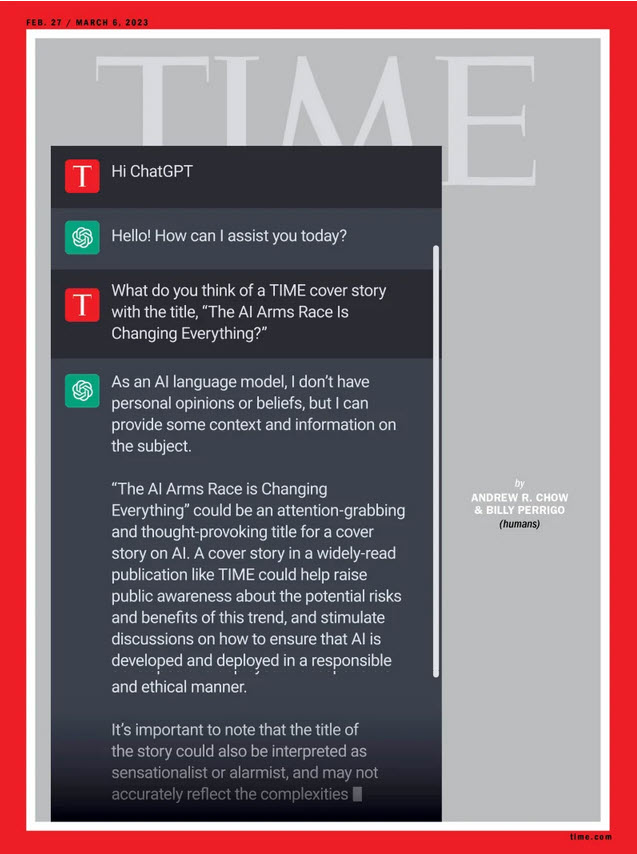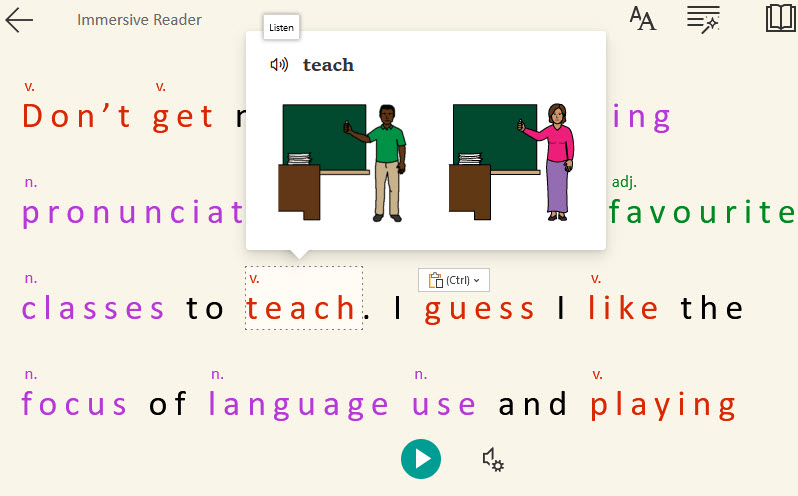Most of us are aware of the importance of the issues around digital accessibility through our own disabilities and supporting our students in virtual and blended classrooms. Some organizations offer accessibility training for educators and learners. Due to accessibility legislation and policies, software vendors build accessibility features into their wares. This opportunity allows us to make our documents more accessible. This post suggests some features available in the Microsoft Word app that instructors may leverage to make their digital documents more accessible. Please be aware that this is not a comprehensive accessibility resource, but an introduction for interested educators. Continue reading
All posts by John Allan @mrpottz
ChatGPT Prompting the Basics
 During interactions over the past year with language instructors in various venues, I have observed a trend with educators’ generative chat usage. Instructors are aware of generative chat technologies such as ChatGPT and Microsoft Edge Copilot through mainstream media, social media, relatives, students, or their peers. However, few have gone beyond sampling these tools a few times with basic prompts out of personal curiosity or to commence using prompts for lesson preparation.
During interactions over the past year with language instructors in various venues, I have observed a trend with educators’ generative chat usage. Instructors are aware of generative chat technologies such as ChatGPT and Microsoft Edge Copilot through mainstream media, social media, relatives, students, or their peers. However, few have gone beyond sampling these tools a few times with basic prompts out of personal curiosity or to commence using prompts for lesson preparation.
Attempts at generating resources with a generative chat tool do not always result in usable content because instructors often give up after a few prompts. They do not understand that creating suitable content is an iterative process that involves structure, a defined target, skill, and imagination. In this post, I offer guidance for language educators trying to create content for instructional purposes through prompting generative chat tools. Continue reading
Climbing Up and Sliding Down the AI Slope of Enlightenment
It has been a year since OpenAI released its generative chat app, ChatGPT. As an avid education technologist, I must confess that I jumped headfirst into the ChatGPT spectacle. This enthusiasm is documented by more than twenty professional development activities that have been facilitated or written over the past months. These are listed in the Resources section below.
Recently, I have taken a breath to reflect on ChatGPT and how it has dominated the conversation in education technology in 2023. Within this reflection I have mapped my experience against Gartner’s Hype Cycle of new technologies to document how I am faring in relation to education’s adoption of generative chat technologies.
Continue readingCoping with the AI Challenge
September is here! The past eight months of warnings of artificial intelligence- or AI- generative chat calamities were heeded by some and ignored by others. Hopefully, you are one of the fortunate ones who work in an institution where AI policies, guidelines, just-in-time support and plagiarism teaching-learning plan statements are ready and accessible to supervisors, instructors and learners. If this is not your situation, this post is for you. Read on to quickly pick up some tips to cope with AI generative chat technologies while your institution works towards comprehensive strategies.
Digital Citizenship and the Challenge of AI
The past six months have witnessed an unprecedented technological phenomenon that has the potential to revolutionize most professions. Education is now challenged with developing innovative teaching and assessment strategies. As well, stakeholders in education will need to adjust to the deepened pressures that AI tools pose for plagiarism and misinformation. Weekly, waves of new and reinvigorated AI powered tools are being touted continuously through social media and education sources. Active curation and training will be required to sort these out. This will include revising institutional policies and codes of ethics.
As some educators are over the shock and fear stage of this disruption, they are now looking for guidance on how these technologies can be used to enhance teaching and learning. Applying digital citizenship principles to map out practical activities is one approach that may assist educators in successfully integrating AI chat tools into their lessons.
Continue readingChatGPT Extensions: Make it Your Personal Assistant
Whether you’re aware of it or not, the recent release of artificial intelligence-powered chatbots is transforming the way we interact with technology. OpenAI’s ChatGPT, Chat Generative Pre-Trained Transformer, allows anyone to engage with it in a human-like manner to achieve a response. Over the past few months, scores of GPT-powered web apps and browser extensions have appeared due to AI-powered chatbots resulting from the release of the OpenAI’s GPT API (applications programming interface). The API allows apps to work with ChatGPT. This allows software developers to create more powerful applications. The browser extensions described below will help language instructors use ChatGPT more effectively to enhance their lessons and daily digital tasks.
Continue readingAI in the Classroom: The New, New Normal?
In December of 2022, Cecilia Aponte-de-Hanna brought the discussion of artificial intelligence or “AI” to the TESL Ontario community with her post, AI in the Classroom: Love It or Hate It – It’s Here. Cecilia piqued our curiosity by showing us an example of a test text generation and suggested three ways that she was considering using AI with her lessons.
Continue readingStart Your Own ESL Business
If you do not have a permanent, year-round teaching contract in Ontario, I am sure that you have considered alternative careers or income streams from time to time. We all have our own reasons for our professional situations whether they are extrinsic or intrinsic. As I see it, there are five paths forward for short-term, contract ESL instructors in our sector:
Continue readingImmersive Reader for Autonomous Reading Practice
Introduction
In 2018, Beth Beardall posted that reading advances learner grammar comprehension, vocabulary, writing skills, critical thinking skills and speaking fluency in the post Reading, Reading, Reading. Why it is so important! One way to assist your learners with reading is to encourage them to use the Microsoft Immersive Reader tool.
Continue readingCreating Dialogues Remotely
Over the pandemic, several instructors have commonly requested assistance with recording dialogues for PBLA activities, assessments, reading practice or listening activities. In this post, I have detailed the steps. These steps focus on preparing a listening dialogue for a class activity. I am sure that many instructors and students have devised their own hacks for this issue, so if you have invented better methods, please add them to the comments below.
Continue reading








